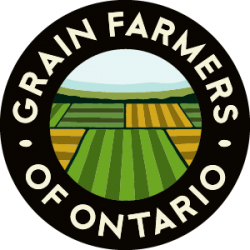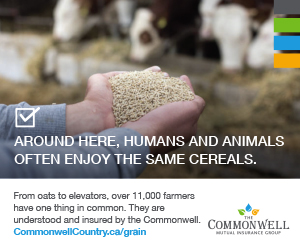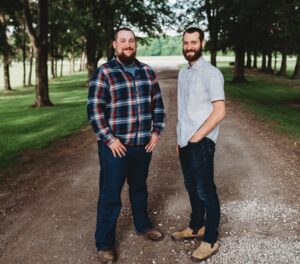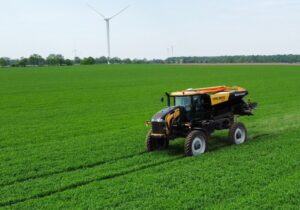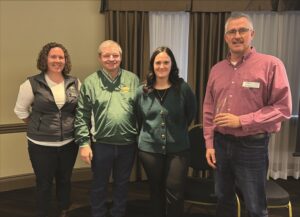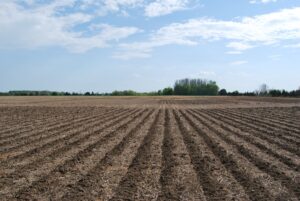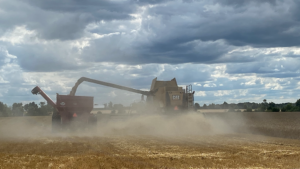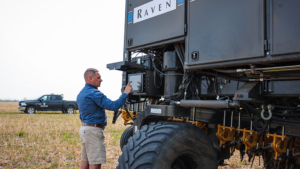Educating future farmers
EXPLORING ALTERNATIVE POST-SECONDARY OPTIONS
farming and a post-secondary education don’t have to be two completely separate worlds. As these four farmers show, it’s possible to carve out a successful career path by finding inventive ways to blend both your education and your farming backgrounds together.
graphic design
Hiliary Breadner’s farming roots go back to 1856, when her family originally settled their farm halfway between Meaford and Markdale. Today, they operate 250 acres of cash crops, as well as 60 beef cattle. But while she was completing a high school co-op placement at a sign shop, Breadner realized her passion for graphic design.
PHOTO: HILIARY BREADNER
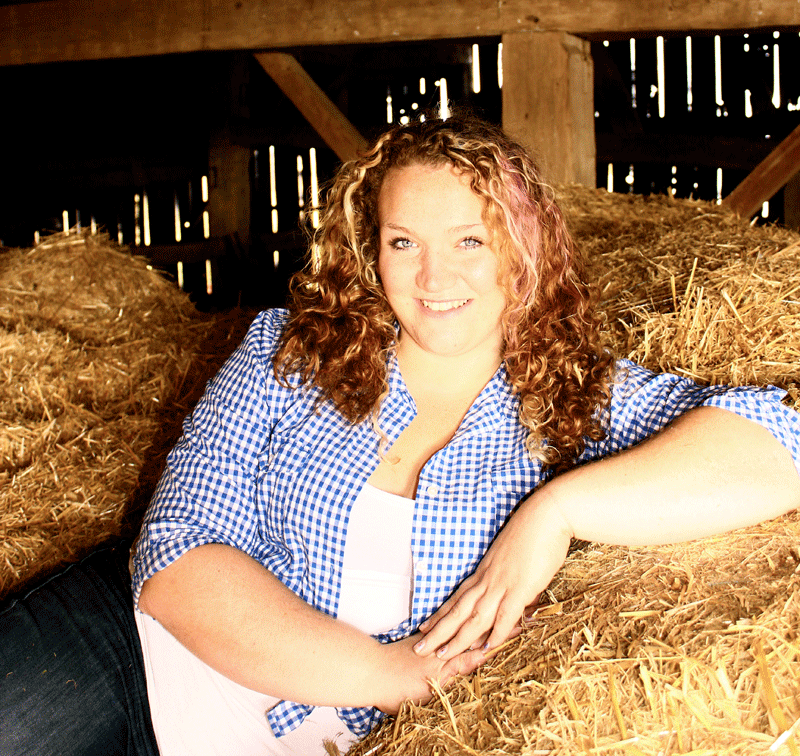
“I’ve always been kind of a creative, artsy person,” she says.
Once she finished high school, Breadner headed to London for the three year graphic design program at Fanshawe College. The program prepares students for a professional career in the graphic design industry. Students start with learning the basics in design concepts and software, before moving on to more advanced courses in web, multimedia, graphics and illustration.
Breadner says her time at Fanshawe was stressful and challenging, but ultimately, prepared her well for the working world outside of school.
“Everything was very hands on, you have a lot of projects to do in very short time periods,” she says. “They tried to make the program as much of a real-world experience as possible.”
Shortly after graduating this past April, Breadner started her own graphic design business called “By the Hil Graphics” and uses an old office space in her barn as her headquarters. Already, she’s gained her fair share of jobs creating logos and signage for local farms and agricultural businesses.
She sees her twin occupations of graphic designer and farmer as giving her the best of both worlds. “I’m doing something I love, but I’m farming as well,” she says. “And if there’s something else that young farmers want to pursue besides farming, they definitely have plenty of options.”
education
Erika Kamenz hails from a 1,000 acre cash crop and livestock farm in Spencerville, just south of Ottawa. She is the second generation of her family to work the land bought by her father, a former fighter pilot; it’s given her an appreciation for farming that she’s now teaching to others.
It was while Kamenz worked as a lifeguard at the YMCA during high school that she discovered a deep passion for working with children. She decided to attend Ottawa University for her English literature degree, and from there, completed her bachelor of education degree at Nipissing University’s Schulich School of Education. Kamenz graduated this past April.
The bachelor of education is a one year program, where students complete courses in curriculum studies, educational foundations and teaching methods, along with two 12 week practice teaching placements at local elementary and secondary schools.
PHOTO: ERIKA KAMENZ
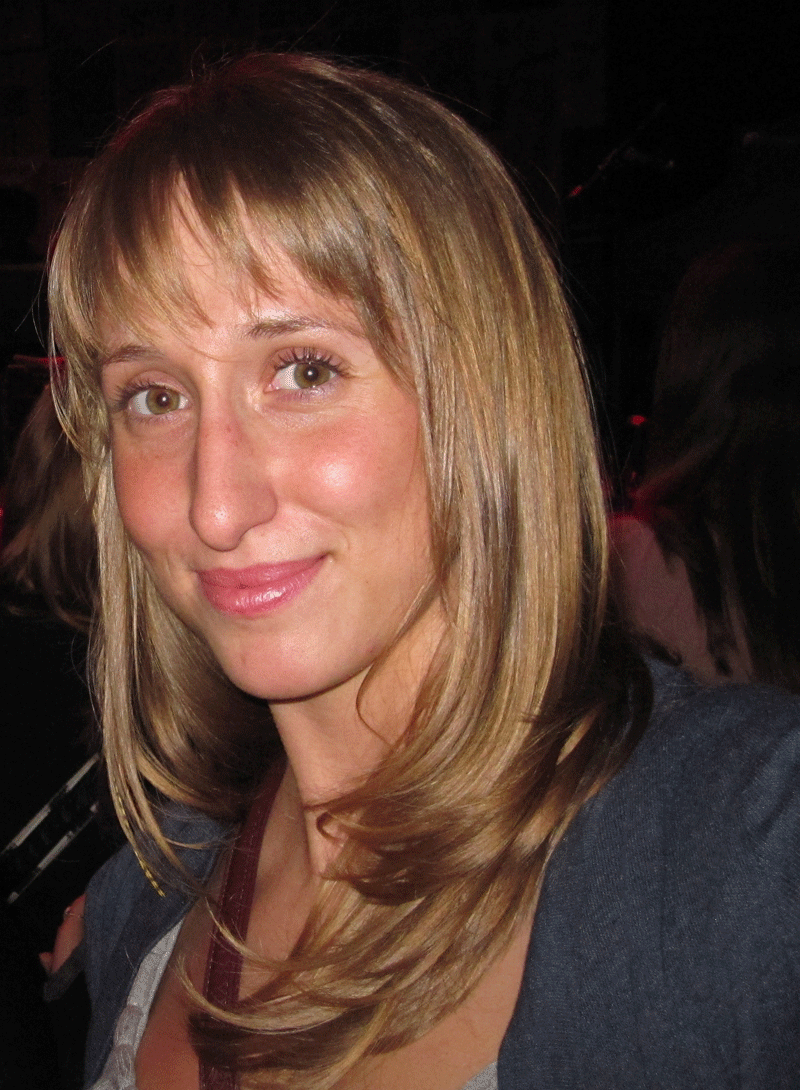
Kamenz enjoyed her practice teaching opportunities and the challenges that came with handling a classroom full of children. “Kids are definitely kids and it’s a challenging environment, but you definitely learn a lot about yourself,” she says. “It was a great program. And Nipissing is a small campus, so you really get to know everyone who’s going to school there and working in the faculty.”
Recently, Kamenz was accepted onto the Thames Valley School Board’s supply teaching list and is eager for her chance to mold young minds. “People can always remember their one teacher and that defining moment where that teacher changed their perspective on either the world or themselves,” she says.
And when it comes to changing perspectives, Kamenz hopes to bring a bit of her world as a farmer into each classroom she visits. “Whenever I can, I talk about the fact that I come from an agricultural background and that it’s a great industry, people should know more about it and respect it more than they do.”
political science
For Adam Shea, becoming a farmer was always the master plan. He grew up on a family farm located 20 minutes south of Lindsay, Ontario where they still operate a large mixed cash crop, beef and sheep operation.
Shea admits he didn’t originally have a clear university path to follow. “In high school I really wasn’t sure what I wanted to do with my life, but I knew I wanted to farm,” he recalls.
However, his parents urged him to pursue a university degree that would give him another potential career to fall back on. Knowing that he had a long-time passion for politics and history, Shea decided on the four year political science program at Ottawa’s Carleton University. The program gives students a number of different areas to study – from conflict resolution and international relations – to how political ideas and policies such as globalization and international development come together.
PHOTO: ADAM SHEA

Since graduating in 2009, Shea has put his political science background to good use, serving as president of the Kawartha Junior Farmers and a representative to 4-H Ontario. Last spring, Shea was elected as a Grain Farmers of Ontario delegate for his district, through which he helps promote and support new marketing opportunities for local grain farmers.
Shea made his independent grain farming debut this past season – renting a 50 acre plot of farmland and harvesting 41 bushels of soybeans per acre. He also works full time as a sales rep for Thompsons Limited grain elevator in Pontypool.
Shea credits his political science background for giving him the ability to think critically when making daily decisions that can affect his farm’s production and profitability.
“University does teach you to analyze and question things – which I think is a very necessary thing when you are first and foremost a grain farmer,” says Shea. “There’s so much noise in the industry. And you have to be able to cut through that noise to make those important decisions.”
electrical apprentice
Now thirty-five and with a wife and three children, Tim Stratichuk took a direct route into the working world; while he was still in high school he decided to become an apprentice electrician.
“I never missed a day, I walked right out of high school and went straight to work as an apprentice,” he says with a laugh.
Stratichuk and his father are fourth and fifth generation farmers with an 800 acre grain and oilseed business just south of Windsor in the town of Amherstburg.
He took advantage of co-op trade programs offered in high school and quickly began what would be a four-and-a-half year apprenticeship program through St. Clair College in Windsor. The construction and maintenance electrician’s program is divided up between on-the-job assignments and three 10 week in-class periods, which are balanced towards practical theory, concepts and safety-oriented training.
PHOTO: TIM STRATICHUK
.jpg)
Including his apprenticeship, Stratichuk worked as an electrician for eight years. But even with the financial stability, he wanted to find more time for farming and family – something his 60-plus hour workweeks wouldn’t allow.
“Letting go of farming was never a question in my mind,” he says.
His current position with Enwin Utilities, the City of Windsor’s electricity provider, gives Stratichuk steady working hours, but also allows him the freedom to run the farm with his father. Stratichuk says he takes comfort in knowing that he can fall back on his electrical work to ride out any lean years, while continuing to support both the farm and his family.
“To me, getting into the trades is the best thing that I’ve ever done,” he says. “I’ve never had to look for work – if that doesn’t mean something to somebody, then it should.” •

